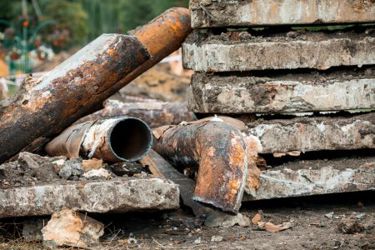As U.S. Takes On Major Lead Line Replacement Projects, Water Loss Is Set To Decline


With the Biden administration pushing forward on a multi-billion-dollar overhaul of the nation’s buried drinking water infrastructure, lead contamination may not be the only crisis facing our water systems now set to be solved.
“One less-often discussed benefit of replacing lead pipes is that it also makes water systems more efficient,” Forbes reported.
For example, when Tokyo replaced its own lead pipelines, its leakage rate plummeted from 20% to 3%. In the U.S., water loss figures can be as high as 50%, so a similar reduction would mark significant cost savings.
“According to a spokesperson for the Tokyo Metropolitan Government, lead corrodes more easily than stainless steel and ‘is vulnerable to external impacts,’ making lead pipes prone to leakage,” per Forbes. “The transition toward corrugated stainless steel pipes had multiple benefits, including leak reduction.”
Motivated primarily by high-level contamination crises, like the one in Flint, Michigan, the federal government is expected to mandate the replacement of lead service lines within the next decade — an effort that’s estimated to cost more than $10 billion and replace some 9 million pipes. But as water scarcity becomes a larger challenge for systems across the country, reducing water loss could be a major added benefit, and one that makes the price tag of this infrastructure investment seem much more reasonable.
For instance, in Texas, one of the driest regions of the U.S., infrastructure replacement will go a long way in better preserving a precious water supply.
“The older Texas’ water pipes get, the bigger the threat they are to the state’s water supply,” according to The Texas Tribune. “Whether it’s losing billions of gallons of water because of a line break or a leaky pipe contaminating water with lead, the age of the state’s water infrastructure impacts public safety.”
As systems in the nation’s driest states and beyond continue to identify and replace their outdated drinking water infrastructure, it’s clear that water utilities and consumers will benefit in more ways than one.
To read more about how outdated pipelines lead to water leaks, visit Water Online’s Water Loss Solutions Center.
